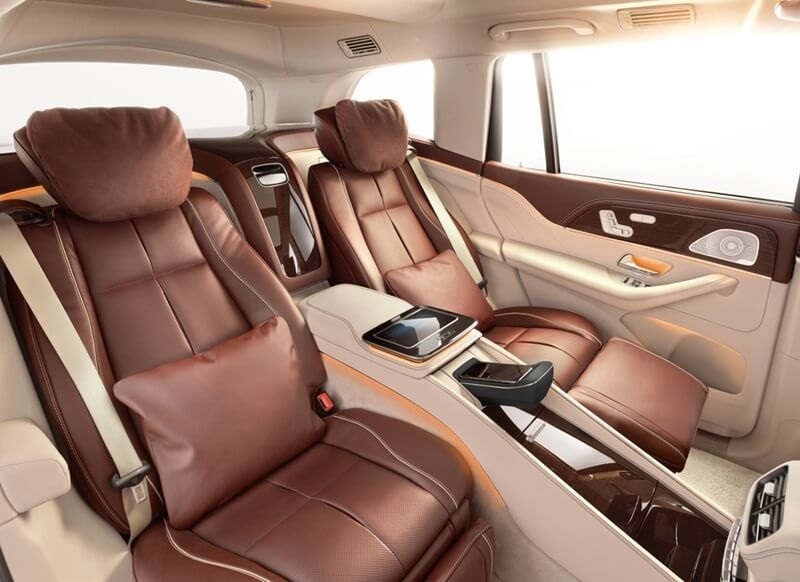
When shopping for a new car, the very first thing to capture your attention might be the sporty body style or power under the hood. However, for the majority of American drivers, what truly matters over the long haul is what's inside — comfort, tech amenities, and the overall cabin experience. That's why car interior reviews are such a critical part of how shoppers evaluate newer cars these days. From seats to infotainment, the interior turns your daily commute into pure heaven (or a nightmare).
In this in-depth review of car interior analysis, we're going to look at what's setting new cabins apart — and how manufacturers are fighting on comfort levels, comfort ratings, car seat quality, and high-end technology. We'll also provide a design comparison of top models, so you can see which brands and models are at the top.
Car interiors used to be an afterthought — plastic dashboards, low-rent plastics, and not much in the way of technology. Now, car interior reviews focus on comfort, convenience, and connectivity. Automakers have realized that drivers spend an average of nearly an hour a day driving in their cars, according to the U.S. Department of Transportation. That's a lifetime to be saddled with poor car seat comfort or clunky infotainment.
Modern-day car interior criticism places more focus on material, ergonomics, and the way technology is woven into the driving experience. A harmonious interior that balances between lavish interiors and intuitive-to-use technology is no longer the domain of luxury players such as Mercedes-Benz or Lexus — even mass-market players such as Hyundai, Kia, and Mazda are making waves.
Probably the most significant category in every car interior review is comfort ratings. They determine how well a car is treating passengers and drivers on the various trips — a short ride to work or a long road trip around the country.
Comfort ratings take into account:
Cars like the Lexus ES, Tesla Model Y, and Honda Accord continue to stand tall in American automobile interior reviews with their blend of quiet interior and ergonomic features. The seats in these cars are of good quality, with soft cushioning along with lumbar support, a determining factor for frequent use behind the wheel.
Luxury carmakers are going beyond the minimum. Mercedes-Benz's S-Class, for instance, has massaging front seats with variable intensity and even adaptive bolsters that hug you around the turns. BMW's Comfort Plus seating package utilizes temperature-controlled elements to warm and cool.
These comfort features are the reason why comfort ratings are a large part of Americans' automobile decisions. A strong engine will be meaningless if your back aches after 30 minutes of driving.

When car reviews of interior features approach the topic of car seat quality, they generally consider more than just softness. Quality really does require a balance of structure, material, and adjustability. American consumers are paying for ventilated, heated, and memory-feature seats at most price points more and more.
Car seat quality is also a matter of brand philosophy. For example:
Even lower-end models such as the Mazda3 or Toyota Corolla feature upgraded car seat material, including solid bolsters and decent wear-resistant cloth. This democratization of comfort is partly why car interior reviews of all segments today cover comfort ratings and materials with the same degree of seriousness that was once reserved for high-end cars.
Technology has transformed the experience of driving — or even just riding in — a car. The latest car interior testing spends a great deal of time evaluating infotainment systems, which have become the nerve center of every modern cabin.
From navigation to entertainment to smartphone integration, infotainment systems make or break the trip. American buyers now anticipate flawless integration via Apple CarPlay, Android Auto, and voice operation, such as Amazon Alexa.
Some of the top-rated systems in recent automobile interior testing include:
Economy cars are also ramping up the tech. Hyundai Elantra and Kia Forte boast smart touchscreens and quick voice recognition, proving the best infotainment systems are no longer just for luxury shoppers.
Design plays a role, of course. The best car interior reviews have systems that strike the correct balance between looks and functionality. A confusing interface or sluggish response will compromise the most opulent luxury interiors in a matter of minutes.
When you step into an automobile with a luxury interior, your first response is usually an emotional one. The juxtaposition of the soft-touch trim, softly lit cabin, and masterful craftsmanship can improve your mood instantly.
Car interior reviews routinely rank vehicles like the Audi A8, BMW 7 Series, and Genesis G90 as America's finest luxury interiors. They not only have great interiors but are also realistically designed.
The shared elements that the top luxury interiors have in common are:
Even electric vehicles such as Lucid Air and Rivian R1T are reshaping luxury interiors with lower aesthetics and eco-friendly materials — blending eco-design and luxury.
The era of car interior reviews is upon such innovations. "Luxury" no longer equates to cumbersome chrome trim but now means a symphony of quietness, comfort, and advanced technology.
What truly defines the contemporary cabin is how comfort ratings and technological synergy fuse together in unison. The luxury interiors just blend these together.
For instance, the BMW i7 offers not just best-in-class car seat comfort but also has an onboard 31-inch 8K rear entertainment screen — a cinematic experience for passengers. Similarly, the Cadillac Lyriq does well in car interior reviews by pairing upscale materials with a 33-inch curved OLED screen.
This concordance brings convenience and tech partners rather than rivals. And isn't a great seat even greater when you can also customize your environment — from seat warmth to overhead lighting — through an easy-to-use infotainment system.
Sustainability is finally being felt in car interior reports across the nation. More businesses are employing recycled or environmentally friendly materials without sacrificing looks.
Volvo, Polestar, and BMW's i-series are at the forefront of using plant-based leathers, reclaimed wood, and ocean plastics for their interiors. Not only are these stylish interiors stunningly good-looking, but they also reduce carbon footprints — to the delight of a new generation of eco-conscious buyers.
As critics note in the majority of car interior reviews, the real challenge is to seek out materials that are not just eco-friendly but also on par with comfort level and durability. Luckily, material science is rapidly catching up.
In the event that you get to read car interior reviews prior to buying your next car, here's a quick checklist to read them like an expert:
Rank design comparison charts — Understand what configurations and materials suit your lifestyle best.
To American drivers, car interior reviews don't simply educate — they provide a guide to a more comfortable ride. Because, honestly, the interior is where you spend your quality miles. The goal isn’t to find the flashiest cabin — it’s to discover one that feels like your personal space on wheels.
This content was created by AI